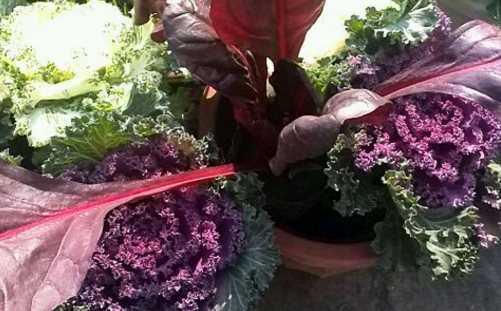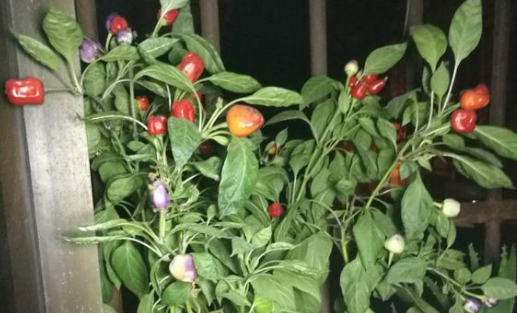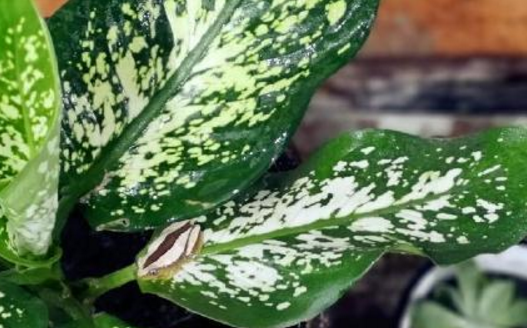What varieties are there in Cruciferae collard greens? Can I cut it? Can I eat it?
Kale is called peony cabbage, cabbage, green cabbage, then what kinds of kale? Can you cut? Can I eat it? According to the information, kale likes cold weather and has strong cold resistance, so in cold winter, people can also see it growing. Kale can tolerate shade, but leaves grow better in plenty of light. It has a large demand for water and cannot be dry, otherwise it will grow slowly, but note that it cannot be waterlogged.

1. What kinds of kale are there?
1. Flower kale
It is an ornamental variety, cruciferous plant, native to Europe. Beautiful plant shape, easy to cultivate, and ornamental period is long, winter can also be viewed, ornamental value is high, is an important material for flower bed layout, can also be used for potted ornamental and cut flower decoration. The sowing time is from the middle of July to the first ten days of August, and the planting time is from the middle to the last ten days of August. The viewing period is from November to December.
2. Oriental Green
Good quality, storage resistance, good growth potential, dark green leaf color, no wax powder, tender leaf edge curled into wrinkles. This variety has the characteristics of heat and cold tolerance, fertilizer tolerance, late bolting and long harvest period. Spring and autumn open field cultivation and winter greenhouse or bed cultivation can be. It usually takes 50 days from sowing to harvest, and the yield is high.
3. Apeda
A hybrid F1 introduced from Holland. Medium height, blue-green leaf color, curly degree, appearance neat generous, excellent quality, resistance is very strong, not only can be used for spring and autumn open field cultivation, but also in winter protected cultivation.
4. White skirt
Tall, round leaf type, early coloring, milky white heart leaf, sharp contrast with green outer leaf edge, whole leaf edge slightly wrinkled, showing wavy. Orderly plant type, plant height of about 40 cm, very cold, can withstand-10℃ low temperature, vigorous growth, good disease resistance.
Second, can it be cut?
Kale can be cut.
First of all, we can know that kale can be cut propagation.
If potted kale, generally in spring in March and April, kale will sprout flowering, at this time, it is best not to discard it, but should continue to water and fertilize, so that after the flowers fade, the old stem of kale will sprout a large number of sprouts, there is no germination of the old stem can be cut off, and then continue to water and fertilize maintenance, to autumn, you can carry out cuttage.
In August and September, you can cut off the sprouts that have grown and cut them according to your own needs.
Cutting method of collard greens
First of all, according to their own needs, determine the number of cuttings, to prepare pot soil, choose clean pots and soil, soil to river sand or pearlite is best, after disinfection standby.
Then it is necessary to trim the cuttings, cut off the sprouts of kale, keep 3 or 4 leaves on each bud, and then carry out cuttings.
When cutting, pay attention to the density of cuttings, leaves do not overlap, after cutting, water should be poured first, and then put the flowerpot in a cool place, according to the condition of the cuttings to water, to ensure that it will not wilt.
Basically, cutting kale, a week or so can take root, half a month can be transplanted.
Kale cutting precautions
Note that after cutting off the cuttings, the remaining plants can continue to be cultivated to produce multi-headed kale plants, and can also be made into old piles of bonsai.
Also, cutting in June, you can culture cut kale, if not cutting, you can let the sprouts continue to grow, it is also possible.
Collards are easy to root if they are bottled, and can be placed for a long time in bright indoor light.
Third, can I eat it?
Because we often see colorful kale in road flower bed decoration in daily life, subconsciously think it can only be used for viewing. In fact, kale is a horticultural variety of edible kale, of course, can be eaten, the taste is also quite good, and it can have the best name for the human body vegetables, long-term consumption of many benefits.
Benefits of eating kale
Kale is rich in nutrients and is known as one of the best vegetables for the human body. Collards contain a lot of vitamins A, C, B2 and a variety of minerals, especially calcium, iron, potassium content is very high, is more than three times that of ordinary kale, eat more kale can effectively supplement calcium, and kale vitamin C content is extremely high, is the treatment of children night blindness preferred vegetables. In addition, collard greens are low in calories and are ideal for bodybuilding and weight loss. As an ingredient, there are a variety of cooking methods, can be fried, cold, soup, etc., in Western food more used with other vegetables to make salad food.
Time: 2019-03-16 Click:
- Prev

What are the varieties of colorful pepper in Solanaceae? How to sow and reproduce? What is the effect and effect?
Colorful pepper, also known as colorful pepper, it is also known as Chaotian pepper, colorful pepper and so on, so what are the varieties of colorful pepper? How to sow and reproduce? What is the effect and effect? It is understood that colorful pepper is a variety of pepper, is a perennial herb, the plant type is not high. Colorful peppers often blossom on the branches.
- Next

What is the hydroponic culture method of evergreen in Araceae? What if the leaves are soft? How do you breed?
Evergreen (scientific name: DieffenbachiapictaLodd.) is also known as Dai Fan Ye, so what is the hydroponic culture method of evergreen? What if the leaves are soft? How do you breed? According to the data, evergreen is a plant native to South America and Brazil.
Related
- Fuxing push coffee new agricultural production and marketing class: lack of small-scale processing plants
- Jujube rice field leisure farm deep ploughing Yilan for five years to create a space for organic food and play
- Nongyu Farm-A trial of organic papaya for brave women with advanced technology
- Four points for attention in the prevention and control of diseases and insect pests of edible fungi
- How to add nutrient solution to Edible Fungi
- Is there any good way to control edible fungus mites?
- Open Inoculation Technology of Edible Fungi
- Is there any clever way to use fertilizer for edible fungus in winter?
- What agents are used to kill the pathogens of edible fungi in the mushroom shed?
- Rapid drying of Edible Fungi

